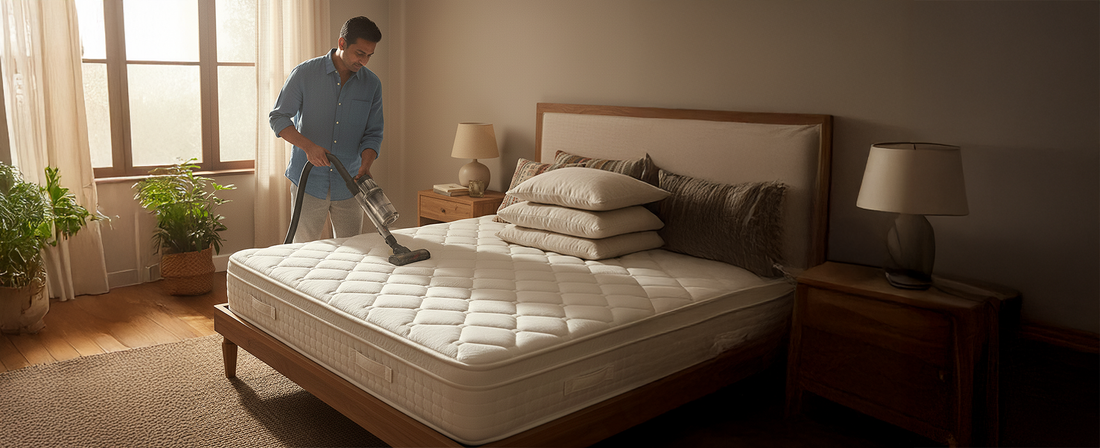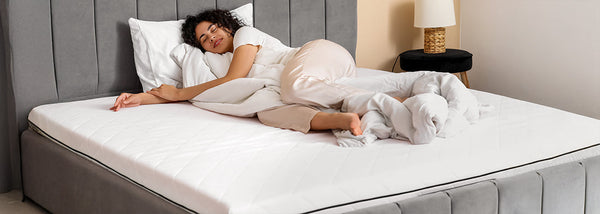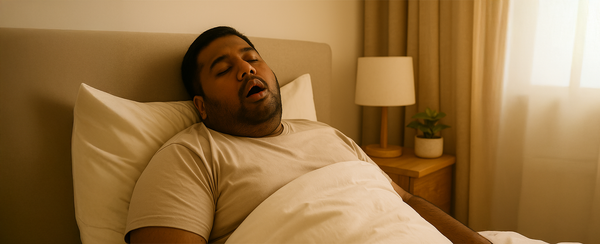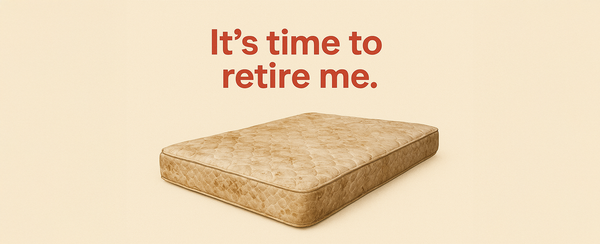The Hidden Health Hazard: How To Care For Your Mattress the Right Way

Table of Contents
Make Wise Choices
Invest In An Invisible Shield
Rotate, Don’t Flip
Vacuum That Dirt
The Rules of Replacement
FAQs
It all begins when you buy a new mattress. Most people do so, expecting it to be an investment in their health and productivity.
But here’s the truth — your mattress quickly becomes a breeding ground for allergens and dust mites, and a health hazard that causes skin problems, sinus reactions and asthma flare-ups.

Like all good investments, your mattress also needs monitoring and care. Here’s the Duroflex way to take care of your mattress so it takes care of you in the future.
Make Wise Choices
The first step to long-term comfort starts before you even bring the mattress home. Visit a store and try out the new mattress in person, and definitely go beyond just pressing the edges of the mattress with your hand. Instead, lie down on it and spend a few minutes in your natural sleeping position.
Take care of your mattress today so it takes care of you in the future.
Also, ask the experts about anti-bacterial properties. At Duroflex, we ensure our mattresses are manufactured under clean, hygienic conditions and covered in a highly durable anti-bacterial material that prevents microscopic bugs from finding their way into the mattress.
Invest In An Invisible Shield
In addition to washing your bedsheets regularly, a mattress protector is your best friend. Mattresses silently accumulate dust, sweat, and dead skin cells over time, which eventually find their way into the layers of your mattress. A washable mattress protector acts as a shield, keeping your bed fresh, hygienic, and durable for longer.

Rotate, Don’t Flip
Gone are the days when mattresses needed flipping every season. Today, unless the manufacturer explicitly states otherwise, mattresses are designed for one-sided use.
Technically, the structure of the mattress is not conducive to flipping, because the base layer is made for support, and the top layer is made for comfort. Flipping the mattress results in the top layer being at the bottom and unable to provide adequate support, while the base layer is on top and unable to provide adequate comfort.
What you should do, however, is rotate your mattress every few months, head to toe. This prevents uneven sagging and helps maintain support across the surface.
- Memory foam, latex and spring mattresses: rotate 1–2 times a year.
- Coir mattresses: rotate 2–5 times a year.
Rotate your mattress regularly and extend its life by at least a year.
Vacuum That Dirt
The best way to keep your mattress clean is to regularly vacuum it. This removes any microscopic bacteria, dead skin, and dust particles, leaving your mattress in good condition for a long period of time.
The Rules of Replacement
Even with great care, mattresses have a natural lifespan. On average, branded mattresses in India are replaced every 5–7 years. If you notice sagging, lumps, or if you’re waking up with body aches, it’s probably time to invest in a new one.
Many of us overlook pillows, but they’re just as important for health and hygiene. Pillows need replacing every 1–2 years.
Your mattress is the foundation of your sleep, and sleep is the foundation of your health. With the proper care, protection, and timely upgrades, your mattress can support you (literally) for years to come.
Think of it this way — you don’t just buy a mattress, you build a long-term relationship with it. Care for it, and it will take care of you.










